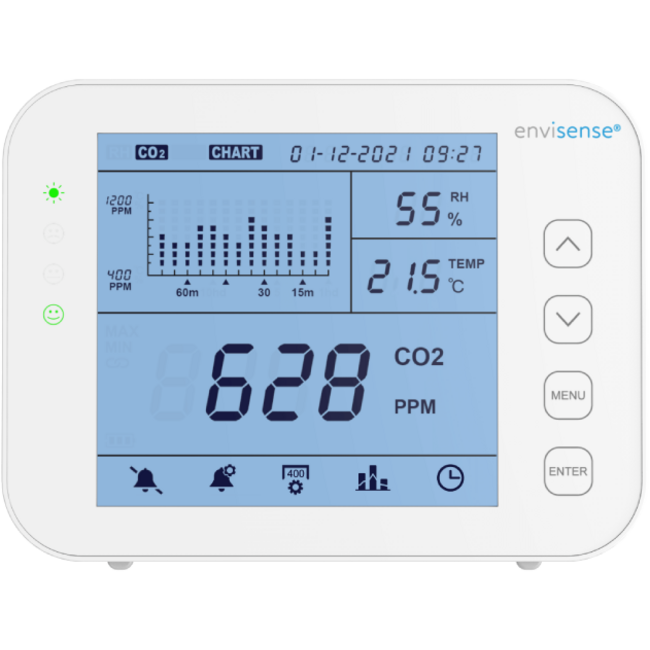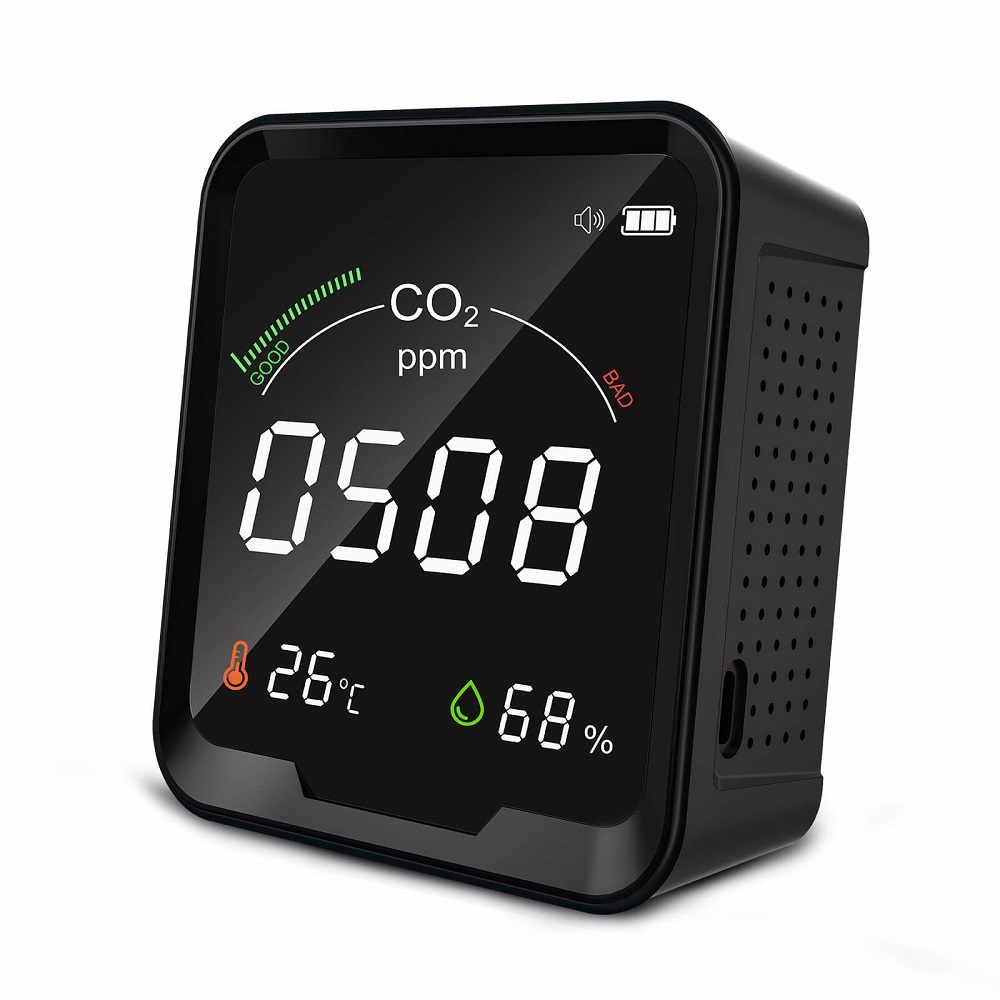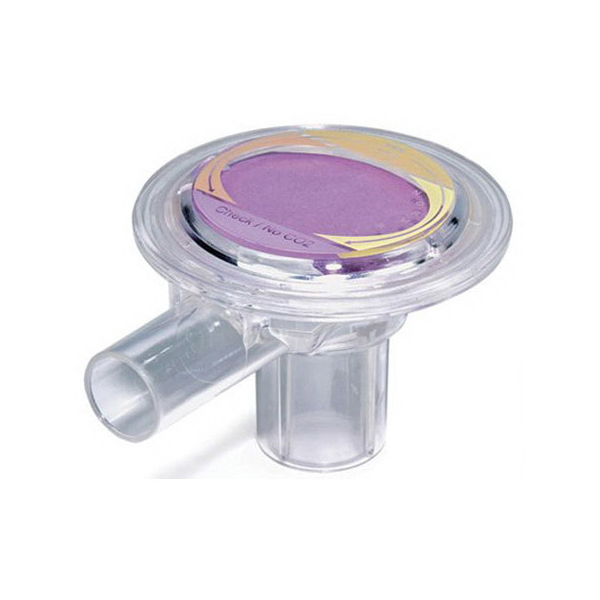Carbon dioxide (CO2) is a natural component of the air we breathe, but elevated levels can pose serious health risks and affect overall air quality. Understanding why every home and office needs CO2 monitors are crucial for maintaining a safe and healthy environment. In this article, we will explore the importance of CO2 monitoring, the health implications of elevated CO2 levels, and practical tips for choosing the right monitor for your needs.
Understanding Carbon Dioxide and Its Sources
Natural vs. Elevated Levels
Carbon dioxide is a colorless, odorless gas produced by all living organisms during respiration and is also naturally present in the atmosphere. Typical outdoor CO2 levels range from 350 to 400 parts per million (ppm). However, in confined spaces, CO2 levels can rise significantly due to human activities such as breathing, combustion processes, and the operation of appliances.
Common Sources in Homes and Offices
In homes and offices, sources of CO2 include gas appliances like stoves and heaters, fireplaces, as well as the act of breathing by occupants. Additionally, building materials, furniture, and even printers can contribute to indoor CO2 levels. Increased activity in crowded spaces, such as meetings or family gatherings, can quickly raise CO2 concentrations. Understanding these sources helps in recognizing the importance of having a CO2 monitor.

Health Implications of Elevated CO2 Levels
Short-Term Effects
Breathing elevated levels of CO2 can lead to a range of short-term health issues, commonly referred to as ‘sick building syndrome.’ Symptoms include headaches, dizziness, fatigue, and increased heart rate. These can severely impact productivity in an office setting or disrupt daily life at home. Even moderate increases in CO2 can result in reduced cognitive function, which is particularly concerning for students and professionals.
Long-Term Health Risks
Long-term exposure to high levels of CO2 can cause more severe health issues. Chronic low-level exposure may lead to impaired cognitive function and cognitive decline over time. Although it’s rare, extreme levels of CO2 can lead to suffocation and loss of consciousness. Therefore, continuous monitoring can help prevent both short- and long-term health risks associated with poor air quality.
Importance of Indoor Air Quality
Enhancing Comfort and Well-Being
Indoor air quality impacts more than just health; it significantly affects comfort levels. Poor ventilation increases CO2 levels, making spaces feel stuffy and uncomfortable. A CO2 monitor helps provide insights into when ventilation is required, enhancing the overall comfort and ambiance of your home or office. When air quality improves, individuals find it easier to focus, relax, and enjoy their environment.
Boosting Productivity
For office settings, good air quality is directly linked to productivity. Studies show that improved air quality can lead to better decision-making and faster reaction times. In a workspace where numerous people share air, monitoring CO2 levels ensures that the environment remains conducive to work. By taking proactive steps to keep CO2 levels in check, employers can foster a healthier, more engaged workforce.

Choosing the Right CO2 Monitor
Key Features to Consider
When selecting a CO2 monitor, consider essential features such as accuracy, range, and response time. A good monitor should provide readings that are accurate and reliable, typically within a range of 400 to 5,000 ppm. Look for devices with real-time monitoring capabilities, allowing you to track CO2 levels throughout the day. Additionally, choose a monitor with a user-friendly display that provides clear readings, alerts, and historical data for analysis.
Portability and Installation
Choose a CO2 monitor that suits your specific environment. Portable monitors may be ideal for home use, allowing you to move the device from room to room. In contrast, fixed monitors are better for offices, providing continuous monitoring in a centralized location. Make sure the installation process is straightforward. Some models can be easily hung on walls or placed on surfaces without the need for complicated setups.
Practical Tips for CO2 Monitoring
Placement Matters
To get the most accurate readings, place your CO2 monitor in strategic locations. Avoid areas like corners or near windows, where airflow can disrupt measurements. Instead, place the monitor in the center of the room where air circulates freely. Additionally, consider placing monitors in spaces with high occupancy, like conference rooms or kitchens, to monitor CO2 levels effectively where they can spike.
Regular Calibration and Maintenance
Many CO2 monitors require periodic calibration for increased accuracy. Depending on the manufacturer, you might need to calibrate your monitor every few months. Regular maintenance checks ensure that the device functions correctly and provides reliable readings. Keep the monitor clean and dust-free, as environmental factors can affect performance. Consult the user manual for specific care instructions to ensure optimal functionality.

Legal and Regulatory Considerations
Workplace Regulations
In many regions, workplaces are required to comply with specific air quality regulations, including permissible CO2 levels. Employers may be legally obligated to monitor and manage indoor air quality to protect the health of employees. Failure to comply can result in fines, legal action, or worse, harm to employee health. Installing CO2 monitors ensures compliance with local health and safety regulations.
Promoting a Healthy Environment
In homes, ensuring good air quality contributes to the overall well-being of families. Educating household members about indoor air quality helps everyone make informed decisions regarding ventilation and hygiene practices. By promoting a culture of health and safety, families can collectively work toward maintaining a comfortable living environment.
The Long-Term Benefits of CO2 Monitoring
Cost-Effective Health Management
Investing in a CO2 monitor can lead to long-term cost savings. By maintaining optimal air quality, you harness the benefits of fewer sick days, reduced medical expenses, and higher productivity. Healthy environments minimize healthcare costs associated with long-term exposure to poor air quality. Long-term savings can outweigh the initial investment in monitoring equipment.
Raising Awareness
Finally, having a CO2 monitor encourages awareness about indoor air quality. It helps create a dialogue around health and safety not only in homes but also in workplaces. Continuous monitoring reinforces the need for proper ventilation and air purification systems, leading to overall improvements in lifestyle choices. Awareness can inspire changes that promote greener living and healthier environments for everyone.
Understanding the Technology Behind CO2 Monitors
How CO2 Sensors Work
Understanding the technology behind CO2 monitors can enhance your appreciation of their importance. Most CO2 monitors utilize either infrared (IR) sensors or chemical sensors to measure carbon dioxide levels. Infrared sensors detect the amount of IR light absorbed by CO2 molecules in the air, providing accurate readings in real time. Chemical sensors, on the other hand, rely on reactions between CO2 and specific compounds to determine concentration levels. While both methods have their merits, infrared sensors tend to be more common in modern monitors for their reliability and accuracy. Familiarizing yourself with these technologies will help you make informed choices when purchasing a CO2 monitor.
Calibration and Accuracy
The accuracy of CO2 monitors can vary significantly based on the quality and style of the sensor used. Regular calibration is essential to ensure accurate readings, especially in high-traffic areas where CO2 levels can fluctuate frequently. High-quality monitors often come with built-in calibration features, allowing for easy adjustments. Many manufacturers provide guidelines on how often to calibrate, typically recommending checks every few months. Being proactive in calibration not only saves time but also ensures you receive the most accurate data, ultimately leading to better decision-making regarding indoor air quality.
Conclusion
In summary, every home and office needs a CO2 monitors to ensure a safe and healthy environment. Proper monitoring can help mitigate health risks associated with elevated CO2 levels and improve overall air quality. By choosing the right monitor, understanding its placement, and adhering to maintenance guidelines, you can maintain optimal indoor air quality. Investing in CO2 monitoring not only benefits your health but also enhances productivity and well-being, making it a wise choice for everyone. Prioritizing this essential aspect of your living and working spaces leads to a healthier, happier life.